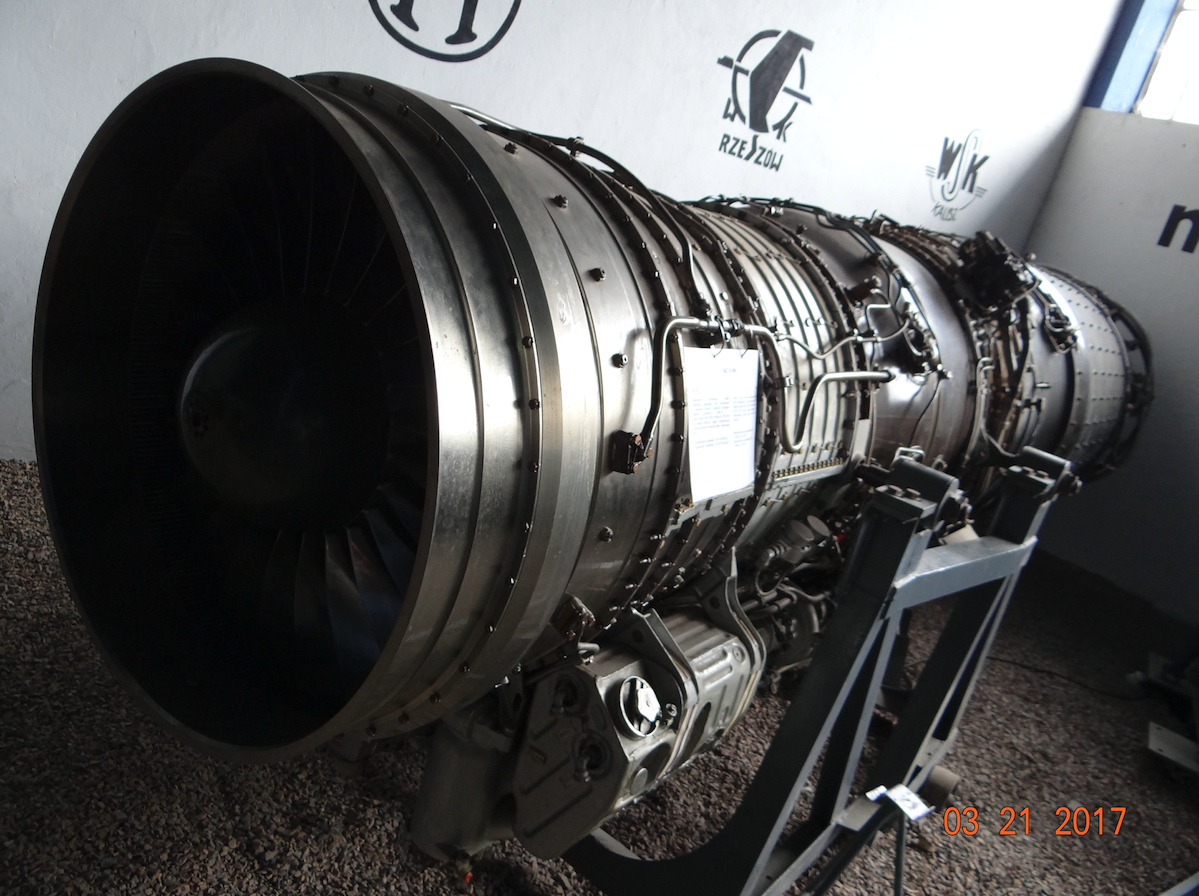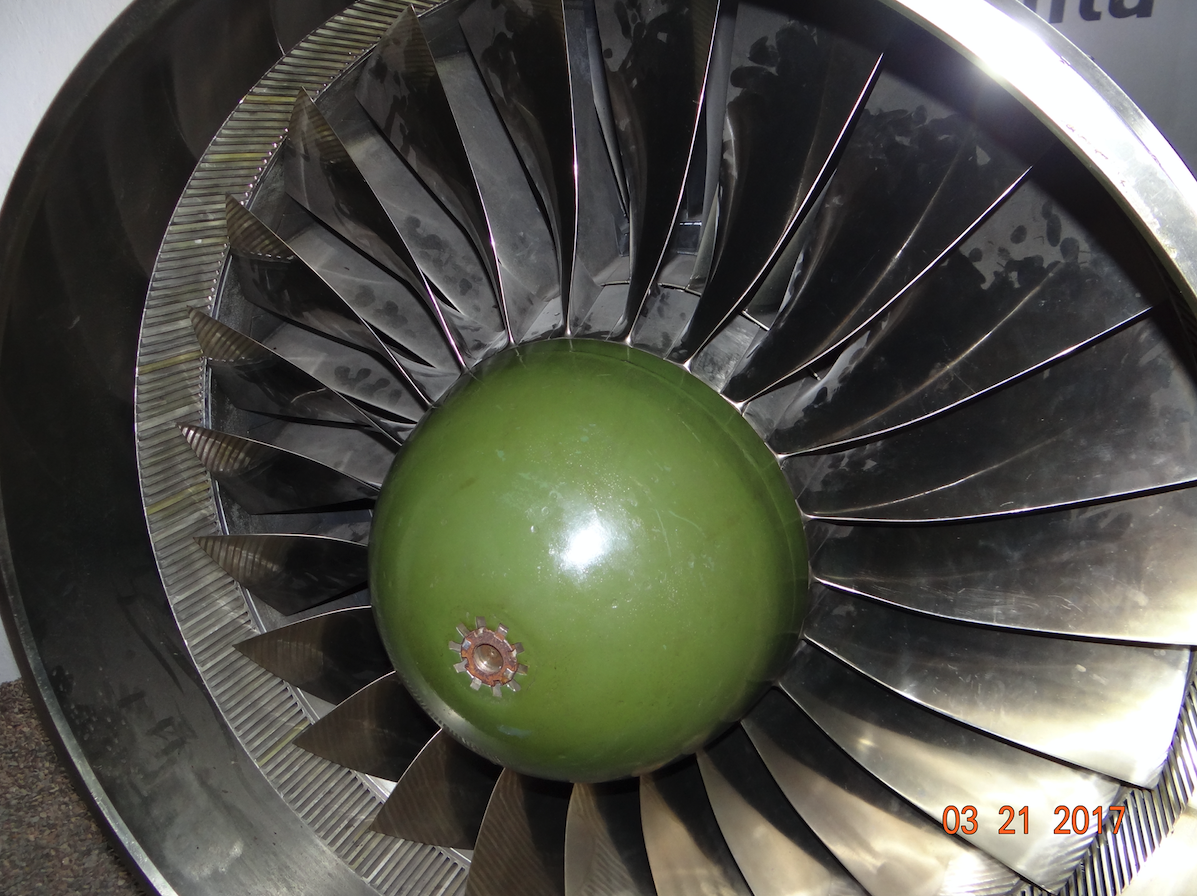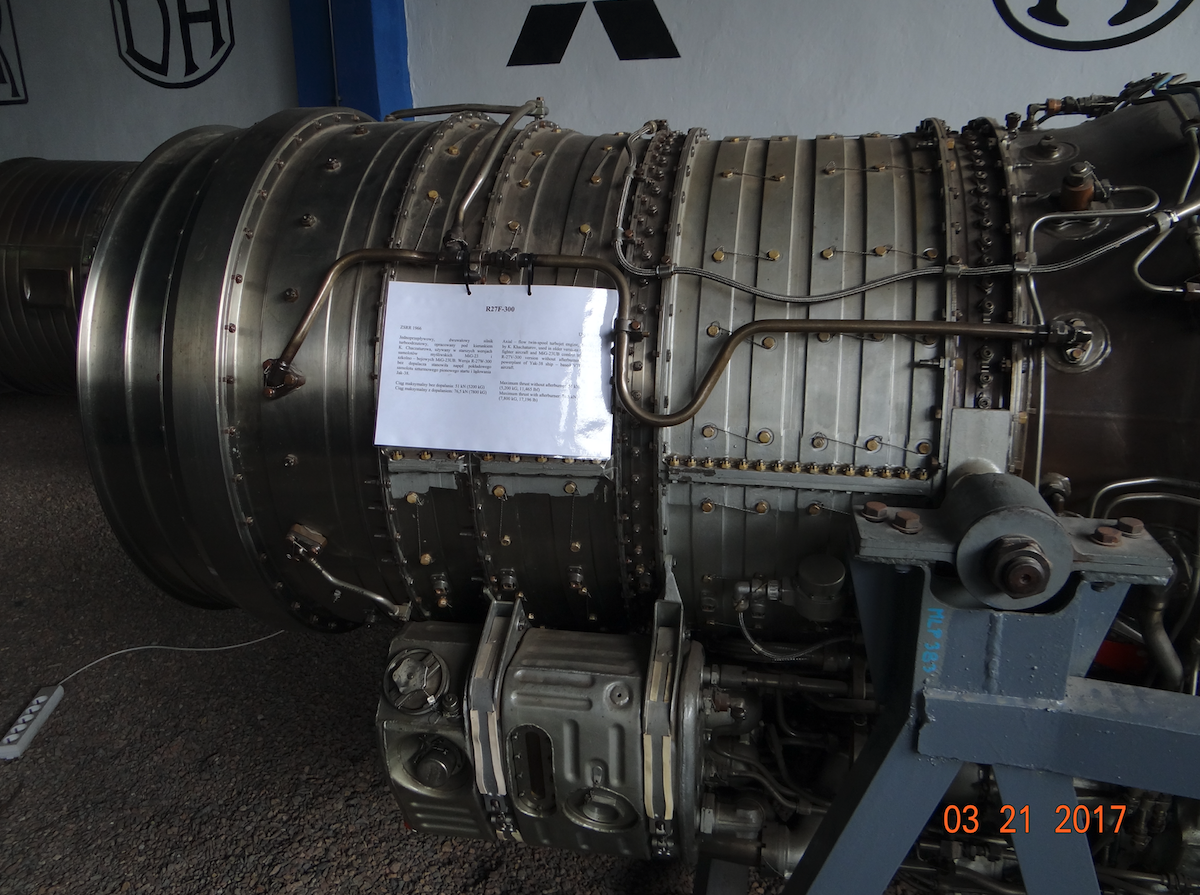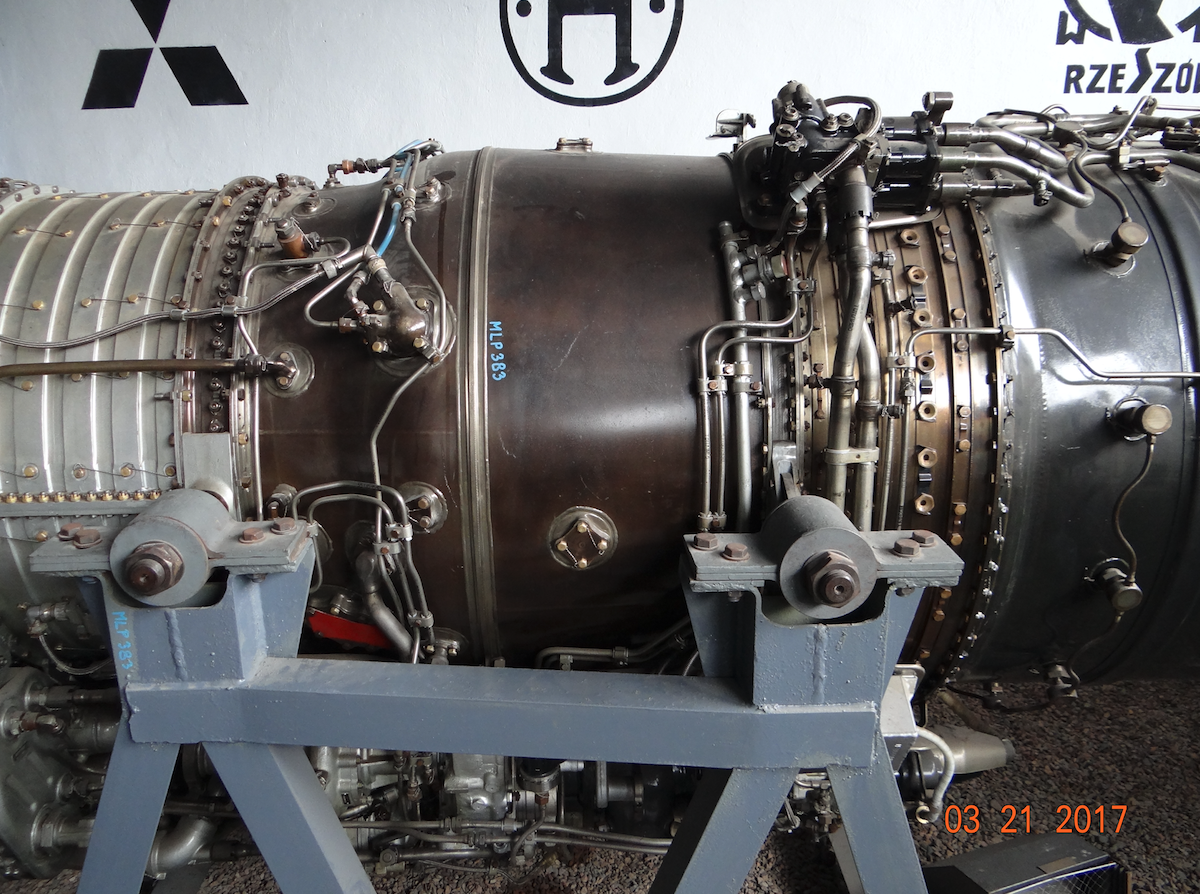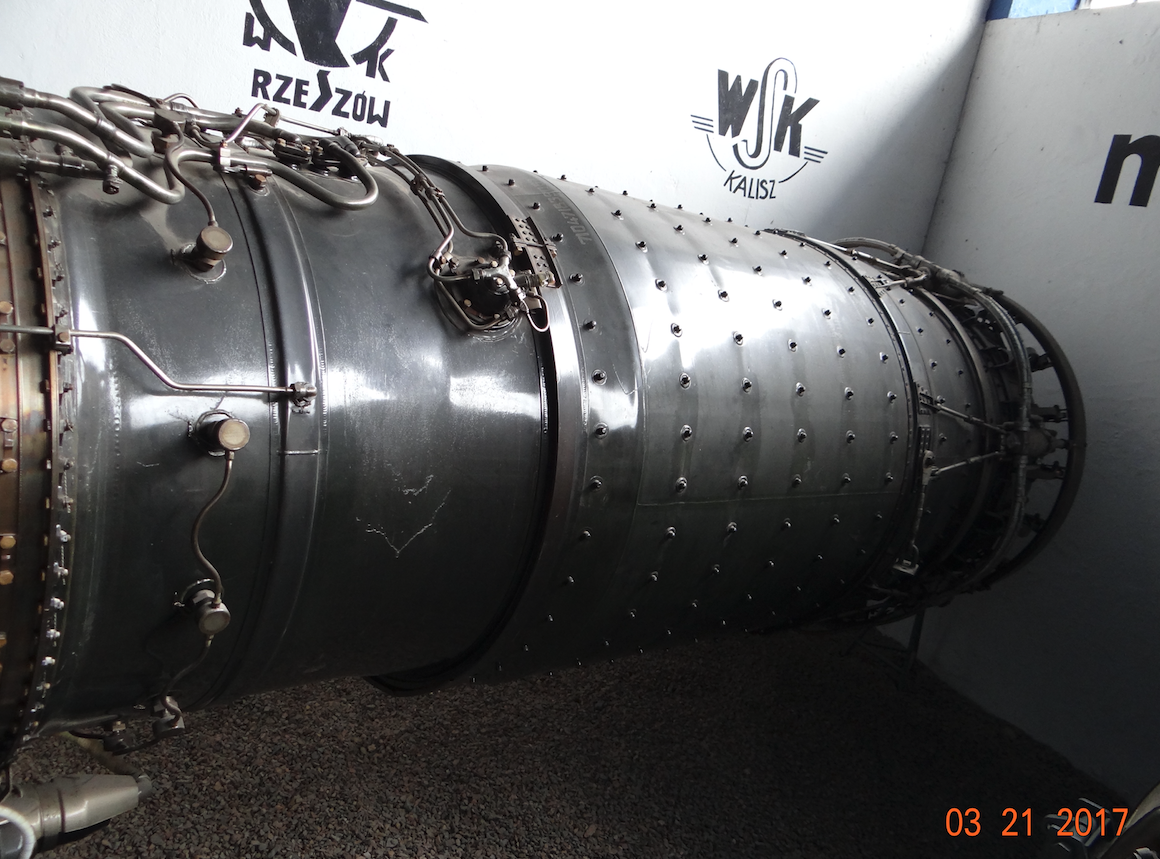Kraków 2020-11-02
Tumański R-29-300. 1972 year.
At the beginning of 60 years, the CCCP decided to build twin-flow engines intended for combat aircraft. Tumański’s team started working on the Izdielienie 55 program.
R-25 engine.
The R-25 engine is a continuation of the R-11, R-13 engines. The R-25 engine was used in the MiG-21 bis aircraft. The R-25 engine has two levels of afterburning. The R-25-300 engine has 1 x 4,020 kG without afterburning thrust, 6,960 kG with the first afterburning, and 9,708 kG with the second afterburning. The engine is single-flow, two-shaft, 3 stages of one shaft compressor, 5 stages of the other, 1 turbine of one shaft and 1 turbine of the other shaft, dual afterburner. Engine length 4.61 m, diameter 0.967 m, weight 1,210 kg.
R-27 engine.
The R-27 engine was built in 1966 under the direction of K. Khachaturov. The engine is single-flow, two-shaft, with an afterburner. The engine was used in MiG-23 DPD planes and the first versions of MiG-23 planes, as well as in MiG-23 UB planes. The version of the R-27 engine without afterburning was used in the Yak-38 vertical take-off aircraft. In this aircraft, the engine exhaust nozzle is double and adjustable. It deflects the exhaust gas stream from the horizontal lining to the vertical position. However, a larger thrust engine was needed.
R-27F-300 engine data:
The Tumański R-27 engine is an engine designed for supersonic flights up to a speed of Ma 2.5. The engine has a maximum thrust without afterburning of 51.00 kN (5,200 kG), and with a maximum afterburning of 76.50 kN (7,800 kG). After activating the afterburner, the thrust gain is 50%.
Engine R-29.
Later, the R-29-300 engine was developed, which was tested in the air in 1972. The R-29 engine, compared to the R-27 engine, is a two-flow engine and has a much higher thrust, both without and with afterburning. The Tumański R-29-300 engine was dedicated to MiG-23, MiG-27, Su-17, Su-22, Su-24 combat aircraft, although foreign buyers were also offered single-flow AL-21 engines. Engineer K. Khachaturov (К. Р. Хачатуров) dealt with the adaptation of the engine to different types of aircraft.
The Tumański R-29-300 engine has several basic variants. The engines are 4.99 m long, 0.968 m in diameter, and weigh 1,777 kg. The engine has a thrust of 8,250 kG without afterburning and 11,500 kg with afterburning. The engine has a 5-stage low pressure compressor (the first and second stages are made of titanium, the others are made of heat-resistant steel), a 6-stage high pressure compressor, an annular combustion chamber with 18 injectors, 1 stage high pressure turbine, 1 stage low pressure turbine and afterburner. The compressor compression is 12.2: 1 (13: 1). The air flow through the engine is 105 kg / s. Fuel consumption 0.78 kg / kGh without afterburning and 1.80 kg / kGh with afterburning, otherwise 0.9 – 1.2 kg / daN / h without afterburning, and 1.5 – 2.0 kg / daN / h with afterburning . The temperature of gases upstream of the turbine is 1,150 degrees C. The engine has a system for automatically maintaining a constant temperature of gases downstream of the turbine in a given regime. Afterburner about 1.5 m long, with three rows of injectors. The engine ends with an adjustable nozzle made of 18 hydraulically operated flaps. Starting the engine on the ground with the TS-21 turbo-starter (Russian TC-21). Kerosene fuel T-1, TS-1, RT. IPM-10 or synthetic WNII-50 oil. The engine’s service life is 900 – 1,500 hours depending on the production series. Inter-renovation period 350 – 450 hours.
As standard, the engine is started with the TS-21 (TC-21) starter. In flight, the engine is started by autorotation. At high altitudes, where the air is thin, oxygen in the cylinder aids starting. The entire lubrication system is mounted on the engine. The engine is adapted to flights at high speeds and low altitudes.
The Tumansky R-29-300 engines are manufactured in Ufa in the Ural Mountains, and can be overhauled at the plant No. 570 Ейске on the Black Sea. The R-29-300 engine was to be used in the unbuilt Romanian IRA-95 fighter-bomber, as well as in prototypes of Chinese Shenyang J-13 fighters.
In Poland, the R-29 engine was used only in MiG-23 aircraft. Since the engine still had some disadvantages, systems and systems stabilizing the operation of the entire drive system were introduced. Examples of systems and systems stabilizing the operation of a turbojet engine installed in the MiG-23 aircraft are the following systems and signaling: БПС-47 – блок противопомпажной системы (BPS-47, block of the anti-pumping system). КРПС – коробка реле противопомпажной системы (KRPS, relay box of the anti-pump system). ПС – помпажный сигнализатор (PS, pump indicator). АОТ – автомат отсечки топлива (AOT, automatic fuel cut-off). ВТ – высокая температура (WT, signal high temperature).
R-29 engine versions:
The R-29-300 engine is the basic version used in the MiG-23 MF plane. The R-29B-300 engine is the engine used in the MiG-27 aircraft. The R-29PN (RN) engine is a revised R-29-300 engine used only in CCCP aircraft. The R-29BS-300 engine is a variant of the engine used in the Sukhoi Su-17, Su-22 aircraft, but not in the Polish Army. The K. Khachaturov R-35-300 engine is an engine that was offered to the modernized MiG-23 and MiG-27 aircraft, which were used outside the CCCP.
Written by Karol Placha Hetman

